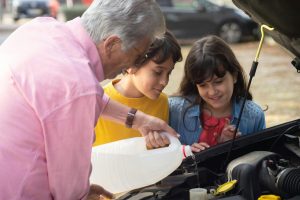The Evolution of Automotive Sales and Dealership Models
The automotive industry has seen a significant evolution in recent years, particularly in terms of sales and dealership models. Gone are the days of traditional car buying, where customers would visit multiple dealerships and haggle over prices. Thanks to the rise of digital technology and changing consumer preferences, the automotive sales and dealership landscape has undergone a dramatic transformation. In this article, we will explore the evolution of automotive sales and dealership models, from the traditional approach to the modern, customer-centric approach.
The Traditional Approach: A One-Size-Fits-All Model
In the past, the process of buying a car was straightforward. Customers would visit a dealership, browse through the inventory, and negotiate with the salesperson for the best deal. This one-size-fits-all model worked well for many years, but with the emergence of the internet and online research, consumers began to demand more personalized experiences.
The Rise of Digital Technology
As the internet became more accessible and smartphones became ubiquitous, consumers started to use digital channels to research and compare car models, prices, and features. This shift in consumer behavior has forced dealerships to adapt and offer a more omnichannel experience, where customers can interact with the dealership through multiple touchpoints.
In response to this trend, many dealerships have embraced digital technology, offering virtual test drives, online sales, and even virtual reality showrooms. This approach allows customers to browse and compare cars from the comfort of their own homes, reducing the need to physically visit a dealership.
The Changing Role of Dealerships
With the rise of digital technology, the role of dealerships has also changed. Instead of just selling cars, dealerships are now expected to provide a wide range of services and experiences to cater to the modern customer. This includes providing excellent customer service, offering financing options, and even providing maintenance and repair services. The goal is to create a seamless and personalized experience for customers, from the initial research phase to after-sales support.
The Modern Approach: A Customer-Centric Model
Today’s automotive sales and dealership models are heavily focused on the customer. Dealerships no longer see themselves as just sellers of cars but rather as providers of a wide range of services. This shift has been driven by the changing preferences of modern consumers, who value convenience, personalization, and a seamless experience above all else.
Personalization and Customization
In today’s market, customers expect a personalized and customized experience. This means that dealerships need to offer a wide range of options to cater to individual preferences. Some customers may prefer to buy online, while others may prefer to test drive multiple cars before making a decision. Dealerships need to be adaptable and offer a variety of options to cater to a diverse customer base.
The Importance of Customer Experience
Customer experience has become a key differentiator in the automotive industry. Customers are willing to pay more for a positive and personalized experience, and dealerships that can deliver on this are more likely to build customer loyalty and attract new business. This is why many dealerships invest heavily in training their staff to provide exceptional customer service, from the initial point of contact to after-sales support.
Embracing Digital Solutions
Digital technology continues to play a significant role in the evolution of automotive sales and dealership models. As more and more customers embrace online research and purchasing, dealerships must keep up with the digital trends to remain competitive. This includes investing in digital marketing strategies, using customer data to personalize the experience, and integrating technology into every step of the purchasing process.
Conclusion
The evolution of automotive sales and dealership models has been driven by the changing preferences of modern consumers and the rise of digital technology. Customers now expect a more personalized and seamless experience, and dealerships are adapting to meet these demands. As the automotive industry continues to evolve, it will be crucial for dealerships to stay ahead of the curve and embrace new strategies and technologies to provide exceptional customer experiences.










